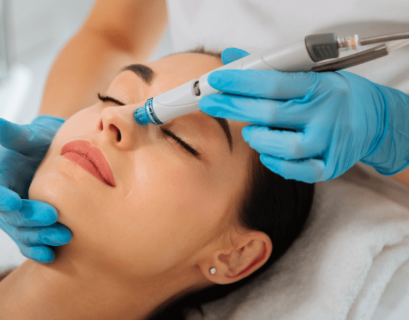1. Introduction to Saudi Arabia’s Healthcare Vision
Surgical Equipments in Saudi Arabia has embarked on an ambitious journey to transform its healthcare system. Central to this vision is the modernization of hospitals and clinics with state-of-the-art surgical equipment. The Kingdom’s Vision 2030 plan aims to enhance healthcare services, reduce dependency on medical treatments abroad, and position Saudi Arabia as a hub for medical tourism. But how does surgical equipment fit into this grand scheme.
The answer lies in the profound impact that advanced surgical tools have on improving the quality of care. With better equipment, doctors can perform more complex surgeries with greater precision, reduce recovery times, and ultimately save more lives. This transformation isn’t just a goal for the distant future—it’s happening right now.
2. The Role of Surgical Equipment in Modern Healthcare
Surgical equipment plays a pivotal role in the modern healthcare system. These tools are the backbone of any medical procedure, from routine operations to life-saving surgeries. Imagine trying to build a skyscraper without the right construction tools; it simply wouldn’t be possible. Similarly, advanced surgical equipment is essential for the success of any modern hospital.
In Saudi Arabia, the adoption of cutting-edge surgical technologies is enabling healthcare providers to offer world-class services. This not only improves patient outcomes but also elevates the country’s status on the global healthcare stage. With state-of-the-art equipment, Saudi hospitals are now better equipped to handle complex cases that were once sent abroad.
3. Key Surgical Equipment Transforming Saudi Arabia’s Hospitals
The surgical landscape in Saudi Arabia is being transformed by several key pieces of equipment. Some of the most impactful include:
3.1. Laparoscopic Instruments
Laparoscopy, a minimally invasive surgery, has gained immense popularity due to its precision and reduced recovery time. Laparoscopic instruments allow surgeons to operate with tiny incisions, leading to less pain and faster recovery for patients.
3.2. Advanced Imaging Systems
High-definition imaging systems, such as MRI and CT scanners, are crucial for diagnosing and planning surgeries. These tools provide surgeons with a clear view of the surgical area, enabling them to perform complex procedures with greater accuracy.
3.3. Surgical Robots
Robotic surgery is no longer a concept of the future. In Saudi Arabia, surgical robots are already assisting in operations, providing unparalleled precision and reducing the risk of human error.
3.4. Laser Surgery Equipment
Lasers are used in various types of surgeries, from eye procedures to tumor removals. They offer precision that traditional surgical tools simply cannot match.
These tools, among others, are revolutionizing the way surgeries are performed in Saudi Arabia, contributing to better patient care and outcomes.
4. Robotics and Automation: The Future of Surgery in Saudi Arabia
The integration of robotics and automation in surgery is one of the most exciting developments in modern medicine. In Saudi Arabia, robotic surgery is becoming increasingly common, particularly in complex procedures like cardiac surgery and oncology.
4.1. The Rise of Surgical Robots
Surgical robots, such as the da Vinci system, are revolutionizing how surgeries are performed. These robots provide surgeons with enhanced precision, flexibility, and control, allowing for minimally invasive surgeries that result in quicker recovery times.
4.2. Benefits of Robotic Surgery
Robotic surgery offers numerous benefits, including smaller incisions, reduced pain and blood loss, and shorter hospital stays. These advantages not only improve patient outcomes but also enhance the overall efficiency of the healthcare system.
4.3. Training Surgeons in Robotic Technology
As robotic surgery becomes more prevalent, Saudi Arabia is investing in training programs to ensure that surgeons are proficient in these new technologies. This investment in education is critical to maintaining the highest standards of care.
5. How Innovation in Surgical Equipment Enhances Patient Outcomes
Innovation in surgical equipment is directly linked to improved patient outcomes. Advanced tools enable more precise surgeries, reducing the risk of complications and speeding up recovery times.
5.1. Precision and Accuracy
With the help of cutting-edge technology, surgeons can perform operations with a level of precision that was unimaginable just a few decades ago. This precision reduces the risk of complications and improves the overall success rate of surgeries.
5.2. Reduced Recovery Times
Innovative surgical equipment, such as minimally invasive tools, allows patients to recover faster. This not only benefits the patient but also reduces the strain on hospital resources, allowing them to treat more patients.
5.3. Lower Risk of Infection
Modern surgical tools are designed with sterilization and safety in mind, significantly reducing the risk of post-operative infections. This is especially important in a hospital setting where infection control is paramount.
6. Saudi Arabia’s Investment in Medical Technology
Saudi Arabia is heavily investing in medical technology as part of its Vision 2030 plan. This investment is not just about acquiring the latest equipment but also about fostering a culture of innovation within the healthcare sector.
6.1. Government Initiatives
The Saudi government is launching several initiatives to modernize the healthcare sector. These include funding for new medical facilities, partnerships with international medical companies, and incentives for local innovation.
6.2. Public-Private Partnerships
Public-private partnerships (PPPs) are playing a crucial role in bringing the latest medical technologies to Saudi Arabia. These collaborations allow for the sharing of expertise and resources, ensuring that the Kingdom remains at the forefront of medical innovation.
6.3. Building a Local Medical Technology Industry
Saudi Arabia is not just importing medical technology; it is also investing in developing a local industry. This approach ensures long-term sustainability and positions the Kingdom as a leader in medical technology in the Middle East.
7. The Impact of Surgical Equipment on Medical Education and Training
The introduction of advanced surgical equipment is also transforming medical education and training in Saudi Arabia. Medical students and professionals are now being trained on the latest tools, ensuring they are prepared to work in a modern healthcare environment.
7.1. Simulation-Based Training
Many Saudi medical schools are now using simulation-based training to teach students how to use advanced surgical equipment. These simulations provide a safe environment for students to practice and hone their skills before they perform real surgeries.
7.2. Continuing Education for Surgeons
As technology evolves, so too must the skills of practicing surgeons. Saudi Arabia is investing in continuing education programs to ensure that its surgeons remain at the cutting edge of medical technology.
7.3. Collaboration with International Institutions
Saudi medical institutions are collaborating with international organizations to bring the latest training programs to the Kingdom. These collaborations ensure that Saudi Arabia’s medical professionals are trained to the highest global standards.
8. Regulatory Standards and Safety of Surgical Equipment in Saudi Arabia
As Saudi Arabia adopts more advanced surgical equipment, ensuring the safety and efficacy of these tools is paramount. The Kingdom has established stringent regulatory standards to oversee the use of medical technology.
8.1. The Role of SFDA
The Saudi Food and Drug Authority (SFDA) is responsible for regulating the safety and effectiveness of medical devices, including surgical equipment. The SFDA ensures that all equipment used in Saudi hospitals meets international safety standards.
8.2. Compliance with International Standards
Saudi Arabia is committed to complying with international standards for medical equipment. This commitment ensures that patients in the Kingdom receive the highest quality care, comparable to that in leading global healthcare systems.
8.3. Regular Inspections and Maintenance
Regular inspections and maintenance of surgical equipment are crucial to ensuring their safety and functionality. Saudi hospitals have strict protocols in place to regularly inspect and maintain their equipment, reducing the risk of malfunctions during surgeries.
9. Challenges in Adopting Advanced Surgical Equipment
While the benefits of advanced surgical equipment are clear, there are also challenges in adopting these technologies in Saudi Arabia.




















